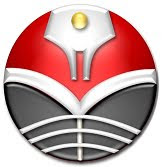Children’s and Adolescent Literature By. Annisa Nuzulul N
Name : Annisa Nuzulul N
Student id : 0704930
Class : Non-Edu A
Children’s and Adolescent Literature
According to what I read, in the chapter one of “Children’s Literature in the Elementary School” which is written by Charlotte S Huck, Susan Hepler, and Janet Hickman, tells about knowing and valuing literature for children. In this book, literature means as the imaginative shaping of life and thought into the forms and structures of language that produce an aesthetic experience which may be a vivid reconstruction of past experience, an extension of experience, or creation of a new experience.
Talking about children’s literature, in the past generation, especially before the nineteenth century, there were not too many books that written for the specific readership of children. Children in this era read books written for adult, taking from them what they could understand. And it was still continued by children today. But, the difference is, children today appear more sophisticated and knowledgeable about certain life experiences than those of any previous generation.
The content of children’s literature is limited by the experience and understanding of children. Mostly, the books for children are filled with childlike imagination and joyful exuberance. Certain emotional and psychological responses seem outside the realm of childhood. Appropriately, children’s books are books that have the child’s eye at the center.
In this chapter, there are two kinds of viewpoint in valuing literature for children, the first is personal values, and the second is educational values. There are sixth values in the personal values in valuing literature for children, such as:
1. Provides enjoyment
Literature provide delight and enjoyment, it can educate at the same time it entertains.
2. Reinforcing narrative as a way of thinking
Actually, thinking in narrative form is a typical of children’s thinking. The book narrative has provided a reassuring ending for inner story that children have told themselves.
3. Develops the imagination
Literature develops children’s imagination and helps them to consider nature, people, experiences, or ideas in new ways.
4. Offers vicarious experiences
Literature provides vicarious experiences of adventure, excitement, and sometimes of struggle.
5. Develops insight into human behavior
Literature is concerned with feelings, the quality of life. It can educate the heart as well as the mind.
6. Presents the universality of experience
Literature continues to ask universal questions about the meaning of life and our relationships with nature and other people. It enables us to live many lives, good and bad, and to begin to see the universality of human experience.
And bellow is the other sixth values from educational values in valuing literature for children, they are:
1. Language developments
The role literature plays in developing the language power of children.
2. Literature and reading
· Reading aloud to children can increase their enjoyment and interest in reading.
· Developing a sense of story
· Developing fluency
3. Literature and writing
The role literature is significant to the development of writing.
4. Literature and critical thinking
Literature provides great opportunity for thinking critically and making judgments.
5. Literature across the curriculum
All areas of the curriculum may be enriched through literature. Literature has the power to educate both the heart and the mind.
6. Introducing our literary heritage
Children have experience with books, and they are also learning about literature. Children’s appreciation for literature and knowledge of their literary heritage should be developed gradually in the elementary school as a way to add to the enjoyment of literature rather than as an end in itself.
There are some differences between children’s literature and adolescent’s literature:
Children’s literature:
1. The book is read by children
2. Using children’s eye at the center
3. less frank
4. filled with childlike imagination and joyful exuberance
5. limited by the experience and understanding of children
Adolescent’s literature:
1. The book is reading by adolescent
2. Showing life from many perspective
3. much frank
4. not too much imagination, even more showing the emotion and reality of life
5. unlimited in experience
And below are the examples of children’s and adolescent’s literary works:
Children’s literary works:
1. Winnie The Pooh: A. A. Milne
2. Peter Pan: J. M. Barrie
3. The Lost World: Sir Arthur Conan Doyle
Adolescent’s literary works:
1. To Kill A Mocking Bird: Harper Lee
2. Speak: Laurie Halse Anderson
3. The Adventures of Sherlock Holmes: Sir Arthur Conan Doyle
This chapter also explains about evaluating children’s books. It is evaluated by look at such elements like plot, setting, theme, characterization, style, point of view, and format.
In the conclusion, the first chapter is a kind of introduction of literature for children, especially in the elementary school. It gives the information about knowing and valuing literature for children. Besides that, it is also explaining about evaluating children’s books.









0 Response to "Children’s and Adolescent Literature By. Annisa Nuzulul N"
Post a Comment